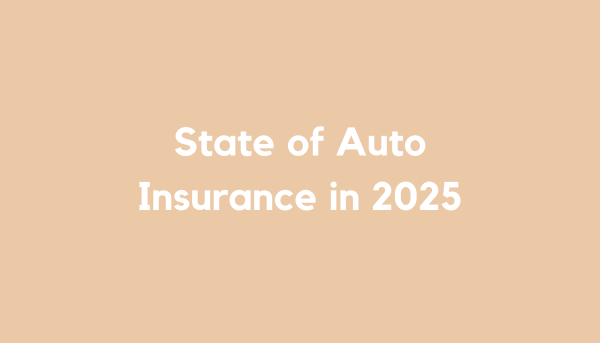MONDAY, APRIL 7, 2025

As we progress through 2025, the auto insurance industry is experiencing significant transformations driven by economic factors, technological advancements, and evolving consumer expectations. These changes are reshaping how insurers assess risk, set premiums, and interact with policyholders.
Escalating Insurance Premiums
Drivers across the United States are facing notable increases in auto insurance premiums in 2025. Several key factors contribute to this trend:
-
Tariffs on Imported Vehicles and Parts: The implementation of a 25% tariff on imported vehicles and auto parts has led to higher repair and replacement costs. These increased expenses are being passed on to consumers through elevated insurance premiums. For instance, full-coverage insurance rates are projected to rise by at least 8% by the end of 2025, equating to additional annual costs ranging from $140 to $568, depending on the state. citeturn0news12
-
Inflation and Rising Repair Costs: Inflationary pressures, coupled with the increasing complexity of modern vehicles equipped with advanced technologies, have escalated repair expenses. This, in turn, has contributed to higher insurance rates. citeturn0news18
-
State-Specific Factors: Certain states are experiencing more pronounced rate hikes due to local conditions. For example, Maryland is projected to have the highest average cost at $4,824, a $746 increase from 2024, with $568 of that due to tariffs. New York will experience the largest percentage increase at 24%, or $911 annually. citeturn0news12
Technological Innovations and Usage-Based Insurance
The integration of technology into vehicles and insurance practices is revolutionizing the industry:
-
Telematics and Usage-Based Insurance (UBI): The adoption of telematics devices that monitor driving behavior has enabled insurers to offer UBI policies. These policies adjust premiums based on individual driving habits, rewarding safe drivers with lower rates. However, concerns about data privacy and security remain prevalent among consumers. citeturn0search0
-
Electric Vehicles (EVs): The growing popularity of EVs presents unique challenges for insurers. While EVs have fewer moving parts, their specialized components, particularly battery systems, can be costly to repair or replace, potentially leading to higher insurance premiums. Conversely, the tech-savvy nature of EV owners may facilitate the adoption of telematics and UBI policies, potentially offsetting some costs. citeturn0search0
Autonomous and Semi-Autonomous Vehicles
The emergence of autonomous and semi-autonomous vehicles introduces new considerations for the insurance sector:
-
Liability Determination: Accidents involving vehicles with autonomous features complicate the process of assigning liability. Insurers are collaborating with manufacturers to develop frameworks that delineate responsibility between human drivers and vehicle systems. citeturn0search0
-
Policy Adjustments: Insurance policies are evolving to account for the unique risks associated with autonomous technologies, including software malfunctions and cybersecurity threats. citeturn0search0
Regulatory Changes and Consumer Protections
Regulatory developments are shaping the auto insurance landscape:
-
Data Privacy Regulations: With the increased use of telematics and data analytics, stringent data privacy laws are being enacted to protect consumers. Insurers must ensure compliance with these regulations to maintain consumer trust. citeturn0search2
-
Sustainability Initiatives: Insurers are introducing policies that promote environmental responsibility, such as offering discounts for electric vehicle owners and investing in sustainable technologies. citeturn0search2
Strategies for Consumers to Mitigate Rising Costs
To navigate the evolving insurance landscape and manage rising premiums, consumers can consider the following strategies:
-
Shop Around: Regularly compare quotes from different insurers to find the most competitive rates. citeturn0news18
-
Bundle Policies: Combine auto insurance with other policies, such as homeowners or renters insurance, to take advantage of bundling discounts. citeturn0news14
-
Maintain a Good Credit Score: A higher credit score can lead to lower insurance premiums, as insurers often use credit information to assess risk. citeturn0news18
-
Consider Telematics Programs: Participating in UBI programs that monitor driving behavior can result in personalized discounts for safe driving habits. citeturn0news16
-
Increase Deductibles: Opting for a higher deductible can lower premium costs, but ensure that the deductible amount is affordable in the event of a claim. citeturn0news14
As the auto insurance industry continues to evolve, staying informed about these trends and proactively managing insurance choices will empower consumers to navigate the changing landscape effectively.
Posted 5:35 PM
No Comments
Post a Comment |
|
Required
|
|
Required (Not Displayed)
|
|
Required
|
All comments are moderated and stripped of HTML.
|
|
|
|
|
|
NOTICE: This blog and website are made available by the publisher for educational and informational purposes only.
It is not be used as a substitute for competent insurance, legal, or tax advice from a licensed professional
in your state. By using this blog site you understand that there is no broker client relationship between
you and the blog and website publisher.
|
Blog Archive
|